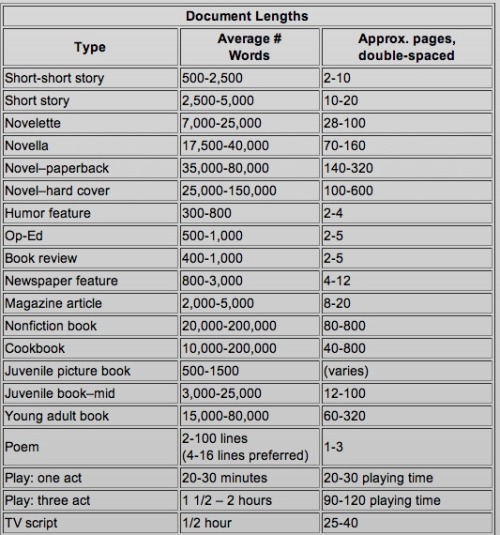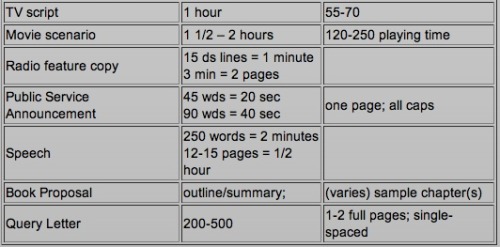petermorwood:bookgeekconfessions:I wanted to double check that “The Cherry on Top” was a
petermorwood:bookgeekconfessions:I wanted to double check that “The Cherry on Top” was a short novel or novella and I found this on uphillwriting.org. I think it’s very informative and hopefully you guys will find it useful! This is a useful chart: writers use word-count (far easier with a computer prog than it used to be with a typewriter) instead of page-count because the final page-count of a story or book can vary so much depending on how those words are typeset. In traditional publishing, it’s obvious that an 80,000-word novel in a small font gives fewer pages than the same one in a large font. Because of that, hardback edition vs paperback edition of the very same book will often be different sizes with a different page-count. In an anthology, writers will be given their available story-length as word-count, not page-count. The editor may not know in advance how the finished book will be printed, but will certainly know that an 80,000-word anthology will have room for 12 x 6,500-word stories, with 2,000 words left over for the usual anthology stuff of writer introductions, biography material, the editor’s linking comments and a bit of wiggle room. This applies to epub as much as tradpub. ************ It’s not always hardbacks which come out bigger; a classic example of that is the single-volume “Lord of the Rings”; its paperback came out in 1968……and a deluxe slipcase hardback edition followed in 1969.Their page appearance is identical, so AFAIK both were printed from the same plates, but the paperback used regular paper for its pages while the hardback used what’s called “India paper” / “Bible paper”. As a result the hardback was only half as thick. The funny part is that its word- and page-count are both higher than the paperback, since it includes all the appendices and fold-out maps while the paperback had just one appendix and no fold-outs. ************By contrast, screenplays are calculated by page count, because they’re locked down to an exact format of font / typeface, spacing and margins, and the rule of thumb for live-action is that one correctly formatted page is equivalent to one minute of screen time; 120pp = 2 hours. (For animation it’s one page = 30 seconds.)Any variation from “industry standard” format is easy to spot, and quickly discarded; once again there’s a rule of thumb, in this case that someone not professional enough to check what the correct format should be and follow it, is likely to be unprofessional in other ways. I’m sure many fine stories have been lost this way, and equally sure that some may well have reappeared again, properly formatted, and gone on to greatness. (On the flipside, there are known formatting tweaks which allow professionals to cheat more material onto each page. Like any cheat this is a bad idea, because once discovered, and it will be - KNOWN formatting cheats, remember? - another rule of thumb applies. Someone who’ll cheat on small things will probably cheat on big ones. And that’s usually that for them.)On to nicer matters: that fixed format means an experienced producer can make an educated guess about expenses and speaking parts by simply flicking through the pages of a correctly formatted script. They’ll already know the script’s genre and the usual budget of base-line movies in those genres, and that flicking is them comparing the proportion of white paper to black text, since text is where something happens that costs money, be it set design, stock footage or crew and actor salary, and the fixed format shows which element is which.I’ve never seen it done but @dduane has, and says it’s like watching wizardry happen. She should know… :->--source link
Tumblr Blog : bookgeekconfessions.tumblr.com
#novels#writing

